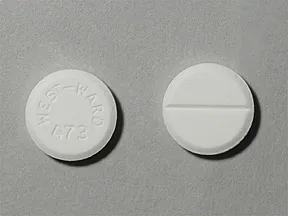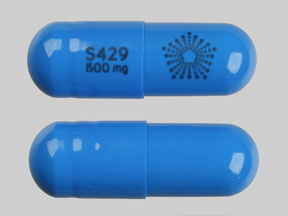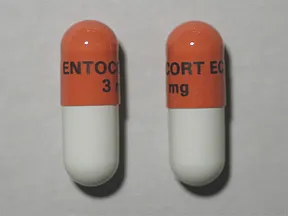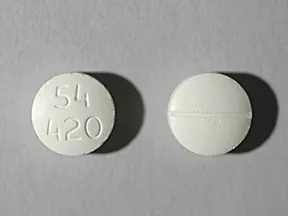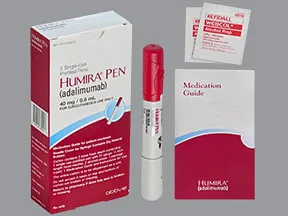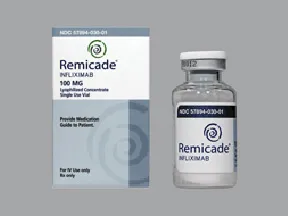On Saturday, I did a pre-race shakeout swim with some lovely IBD warriors - boy was that water cold, but it felt good! We had our inspirational pasta party that night, where I was able to share my story and thank everyone for racing on behalf of the 1.6 to 3.1 million Crohn's and Ulcerative Colitis patients (also, PASTA BUFFET!)
Sunday morning came quickly, though I was able to get some relaxing shut-eye before waking up at 4am. I did some stretching, got dressed and bundled up as much as I could before heading out into the 40 degree morning. No bears stole my breakfast from the hotel lobby, so I enjoyed part of a pastry, a banana, and a couple bites of yogurt. (Side note, who peels hard boiled eggs before serving them?!)
We packed up the car with my bike and transition bag, and left the hotel at 5am to get to transition when it opened at 5:30. I got everything set up pretty quickly, all that was left to do was stay warm until it was time to put my wetsuit on. My toes, nose, and ears were all freezing, but I knew the water would be warm(er than the air). At 6:40, I went to put my wetsuit on, then headed on down the hill to the swim start. When I got to the start, I realized I forgot to leave my flip flops at the swim exit, so my amazing sherpa (Christina) took them over for me - and held on to my warm jacket as well.
I got in and did a little bit of warming up, but the water was cold, and any time part of my body would leave the water, the air would make it even colder, so I just tried to keep moving. Of course the swim start was delayed about 20 minutes, so I spent about 30 minutes in the water trying to keep warm. I met some people, found my Team Challenge ladies, smiled for a couple pictures, did our TC cheer (What do we do for fun? Swim, Bike, Run! TC Tri! Wooooooo!), and then it was time to start!
There were probably 50-60 people in my wave, about 15 were women, the rest men. It was a crazy start, I got kicked, kicked some people, may have accidentally swam over a bunch of people... and finally made it out to the first bouy about 250 yards from the start, where I was finally able to find some calm water. I got into a rhythm, and tried not to think about how cold the water was. Sighting 3/4 of a mile away was pretty tough, but as I got closer to the turn, I was able to straighten out. The lake was super clear and blue, so I just focused on enjoying that - and the clear, non-salt, non-dirt-y, non-icky water.
At the first right turn to start to come back in, I saw that there were a couple people in front of me - but I couldn't see anyone behind me except the one person right on my feet. Finally, I made it to the last bouy (the one left turn), and headed the 200 or so yards to the finish, ran up the "stairs" and up towards transition. Christina found me, pointed out my shoes to me, and joined me in the run up the hill to transition. I saw the Team Challenge cheer squad right before the crazy climb, and they were all cheering like mad! Christina told me I was the first woman (and 3rd person) out of the water - though the person right on my toes was also a woman.
Swim: 1.2 miles; 28:58; 1:22 / 100 yd pace
Transition was slow. I had to climb that darn hill first, and then grab everything I needed for my long, 4-5 hour bike ride. I took my time drying my face, feet, and hands, put on my socks, shoes, helmet, gloves, and grabbed my food and phone, took a bite of a Luna Bar and a couple swigs of Gatorade and water, and was off.
T1: 7:42
And then I was off on the bike! I started my watch, which was supposed to go off every 10 minutes to remind me to hydrate. Of course, my wrist was completely numb from cold, and then the road was a little bumpy, so I never actually felt it go off... The bike course was 3 out-and-backs, two to the right (2 x 16 mile laps) and one to the left (1 x 24 mile lap). The first 32 miles were relatively flat, maybe 1000 ft of climbing total. I was a little bit cold on the first 8 miles, as I had elected to leave my warm cycling clothes in transition. I dried off pretty quickly, and enjoyed the full-sun parts of the course. As I was going, I made sure to thank all of the volunteers, especially the ones directing traffic so we didn't get hit by cars at the turnarounds! As I came in on my first loop, I saw where the aid station was for the second loop, and decided to make a pit stop there to have some nutrition and water. While there, I ate another bite of Luna Bar, took a swig of Gatorade, and refilled my water bottle. After the last turnaround (at about 25 miles), I stopped for another fuel and rest break, and enjoyed the view of the lake for a couple minutes. I didn't want to take another break until I had started the climbs of the last 24 mile lap.I sped through miles 25-32, saw Christina where the two loops met, and started climbing. The good news is I figured I would take about 2 hours on the first 32 miles, but it was actually closer to 1 hour, 45 minutes (~ 18 mph).
I realized that I needed additional nutrition to make it up the climbs ahead, so I stopped partway up the first little hill for another bite of Luna Bar and some Jelly Belly Sports Beans, then went back to climbing up hills. I had trained for hills, but in retrospect, probably could have done additional hill work to make those climbs easier. There were six main climbs on the route, two Cat 4 and four Cat 5. The first was a Cat 5... to get the legs warmed up? I made it up and over that one, was rewarded with a short downhill before starting the steepest of the six climbs, one of the Cat 4s.
I stopped about 1/2 way up the hill for a quick break, then continued on. About 1000 ft from the top, my legs were screaming louder than my head, so I hopped off and walked my bike, following one of the guys. Christina was at the top of that hill, so I took a longer break to hydrate and refuel - and get my arms sunscreened-up by my sherpa!
Then it was time to enjoy the downhill to Emerald Bay. I saw a lot of my TC teammates while I was on the descent (they were climbing the other direction for the Olympic distance tri), and I knew if they could do it, so could I! Emerald Bay was pretty busy with tourists, both in cars and on foot, so I wasn't able to enjoy the downhill as much as I had hoped, and had no momentum to start the 1 mile Cat 5 climb to the top. I had to walk the last 1000 ft again, but was able to pass one of the guys who was also walking his bike. From there, it was all flat or downhill to the turnaround, so I had a lot of fun with that, even with the sharp switchback turns. I finally made it to the bottom / turnaround / aid station, so I stopped for a nice long break. I knew I only had 12 miles left, but had to get my head on-board with making back.
After about 15 minutes, I was ready to get going again. The longest, hardest climb was ahead of me - a 3.3 mile, Cat 4 climb. The first half of the climb wasn't so bad, I found a good gear, got into a good rhythm with my cadence, and pushed myself up the hill, including passing a couple guys who had to stop to walk. When my brain started to question my sanity, I started listing all the reasons I was doing this crazy thing - the names of everyone I know who has Crohn's or UC, their caretakers, and the other 1.6+ million people who have IBD. That got me through most of that climb, until I got back to those darn switchbacks, which, at the turns, were probably 10% grade or more. So, I hopped off the bike one more time to get myself over the top, where there was a photographer waiting for me. I smiled while still walking - I didn't want to change my strategy just for a photo op. ...Okay, I stopped to take this picture:
On the way back down into Emerald Bay, I was following a long line of cars and a motorcycle, so once again didn't get to enjoy the downhill speeds that I love so much, nor did I get the momentum to get me up the second to last Cat 5 climb. I knew Christina would be at the top of that hill, so I got into gear and just started going. I had to chunk the hill to get up as far as I could - first to a cluster of trees, then to a sign, then to the next cluster of trees, and then finally, I decided once I got to the next cluster of trees, I would walk the rest of the way. Christina met me and walked with me for a bit, and then I decided to hop back on at the "Share the Road" bike sign. From there, I knew it was (pretty much) all downhill, save for one more Cat 5 climb. I savored the amazing downhill (especially the hill that I couldn't make it up) - I was probably going close to 40 mph, keeping up with the cars and the speed limit.
Right before the last climb, the Race Director came up to me on a motorcycle to make sure I was okay, and to let me know I had to finish the bike by 12:50pm. I tried to look at my watch, but it wasn't showing the time, only where I was in my 10 minute hydration splits. I told him okay, and knew that I probably needed to kick it into higher gear to make it back in time. I needed a break close to the top of the final climb, but knew I couldn't stop if I wanted to finish, so I hopped off the bike and did some speed walking while holding my bike AND checking my watch. It was 12:43. I had 7 minutes to make it back to transition. I knew I was close, relative to the 56 mile total, but didn't know exactly how much I had left, so I jumped right back on my bike and sprinted toward the finish.
Lucky for me, it turns out I was just over 2 miles from the finish, and it was mostly downhill. As I came in to make the turn toward transition, the volunteer warned me about the sand trap between the road I was on and the bike path I was supposed to take - and she walked with me across the sand to make sure I didn't fall. At that point, I didn't know if I would make the cut off, but knew I had to try, even on the rooted-out bumpy bike path. I turned onto the road toward transition, was yelled at by a volunteer who was picking up cones that I needed to stay to the left of the cones he was picking up, almost ran over a guy walking his dog (had to yell pretty loud to get him to move, because I wasn't going to slow down!), and came cruising toward the dismount line. I hopped off my bike right at the line and started running for the Bike In (where the chip reader was), but the Race Director was there waiting, and asked me what time it was. I stopped to check my watch, and saw that it was 12:49!
I yelled "12:49! I made it!" and started running again. After I crossed into transition, I knew I made it, and was able to relax, but still wanted to make sure I crossed the finish line (I had to for it to count, even though it wasn't factored into my time). I quickly racked my bike, pulled off my shoes, put on my flip flops, and started speed walking toward the Run Out. The race director yelled that he was going to let me go out on the run, but I told him I was only doing the Aquabike, so I was done. Then a volunteer came walking toward me and told me they had just closed the Run Out (in my head, I said "That's fine, I'll jump over the barrier"), he directed me to go out the side of transition instead. I FINALLY made it out of transition with all the direction, and went to cross the finish line! I had to walk back about 20 ft to cross all of the timing chip readers before I could officially "finish" and receive my medal!
Bike: 56 (or maybe only 55?) miles; 4:52:50; 11.5 mph pace
I officially came in 29 seconds before the course cutoff: 5:29:31!
I am so glad that I didn't give up at mile 44. Crossing that finish line with my Team Challenge family was a great feeling, as was coming in just under the cutoff! Would I do it all again? Absolutely. Will I do a half-distance aquabike again? Sure. Will I do that exact race again? Probably not. :)A special thanks to my sherpa / spectathlete who also volunteered on race morning! Lots of high-fives to Christina!



















